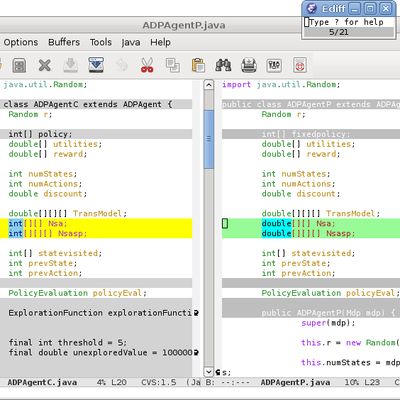

- #BEST EMACS FOR MAC OS HOW TO#
- #BEST EMACS FOR MAC OS CODE#
- #BEST EMACS FOR MAC OS FREE#
- #BEST EMACS FOR MAC OS WINDOWS#
Let us dive deep and see which one surfaces as the best python code editor in terms of ease of use, features offered, community support, remote working, collaboration and is growing in popularity.
#BEST EMACS FOR MAC OS FREE#
Many of these commercial IDEs also have free editions offered typically to students and beginners.

There are other options like Cloud9, Komodo Edit, and a few more. Spyder is specifically designed as a Python IDE for data science.Įnterprises on the other hand, typically go for commercial IDEs like P圜harm, Sublime Text, and Wing. So, talking about beginners and students, some of the good options include free Python editors like Atom, PTVS – Visual Studio Code, VIM, and even P圜harm community edition.Īlso, beginner programmers who are more inclined towards data science, Spyder Python, Thonny, and Atom are among the good options. But is something like that required for a Python beginner? Not really! You will also notice that the design of commercial coding environments is done keeping in mind large-scale projects which are typically managed by distributed teams. Which Python IDE or Editor is Good for You?įor a beginner, the right selection of an editor or IDE can aid learning, and for professionals, it can greatly influence productivity.Īs an example, you can write Python code using a simple text editor like Notepad++, but that would neither be efficient nor easy. You can narrow down a couple to try your hands on before finalizing one. Our recommendation is that you spend a few minutes and go through the details below.
#BEST EMACS FOR MAC OS WINDOWS#

For this, the remote must have access to this file (created by the server), and this is where things get complicated. Set `server-host' to the right name or IP (of the server), and give emacsclient the -server-file option (or specify EMACS_SERVER_FILE). The emacs server must be told to use TCP rather than a local socket (set `server-use-tcp' variable according to emacsclient manual. The best way would probably be to instruct SSH to tunnel the connection (with this port) along with your regular terminal connection. That is, the IP must be public and the port open. Yes, in a pure-unix world, you'd use X, but that wouldn't give you Aquamacs.įor what you need to do, you need to have your local machine visible and accessible for the remote. So, basically, you want to work on some remote machine via SSH, but be able to edit files there using your local Aquamacs installation. But the emacsclient (-version 21.4) on the "remote" system, where the files are but no display, doesn't seem to speak network-ese:
#BEST EMACS FOR MAC OS HOW TO#
> I've figured out how to drive Tramp appropriately, that part's working. > - causing it to use a Tramp URL to access the actual file > - which connects back from the "remote" computer to my emacs-server > - ssh to the "remote" computer, and run something-like-emacsclient with no doubt some command args voodoo > - run Aquamacs on my "local" computer, the one with the keyboard and display > Sorry, I've found plenty of partial answers in the dox and on the web, but I can't quite thread them all together. On Sep 12, 2011, at 3:38 PM, Jack Repenning wrote:


 0 kommentar(er)
0 kommentar(er)
